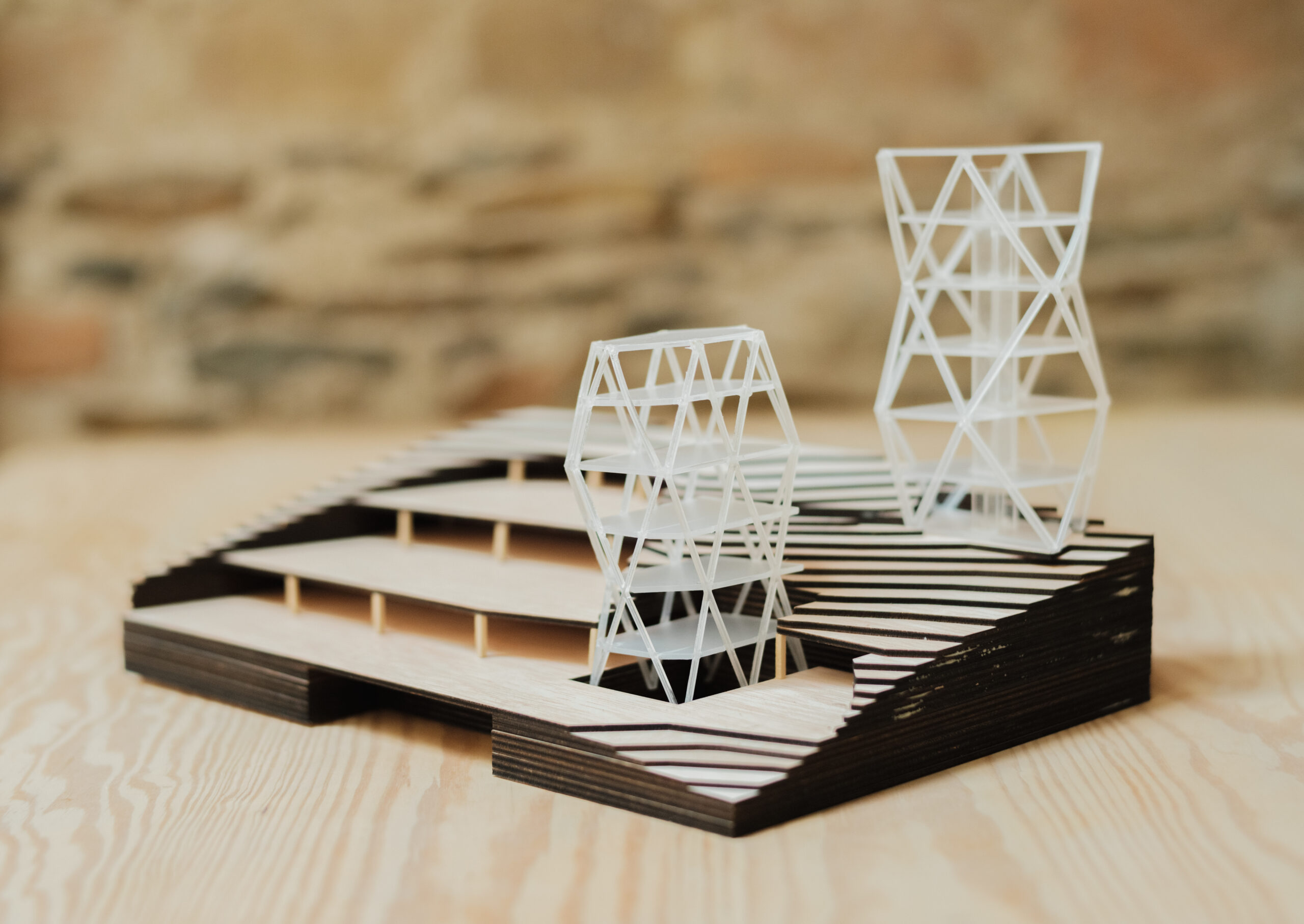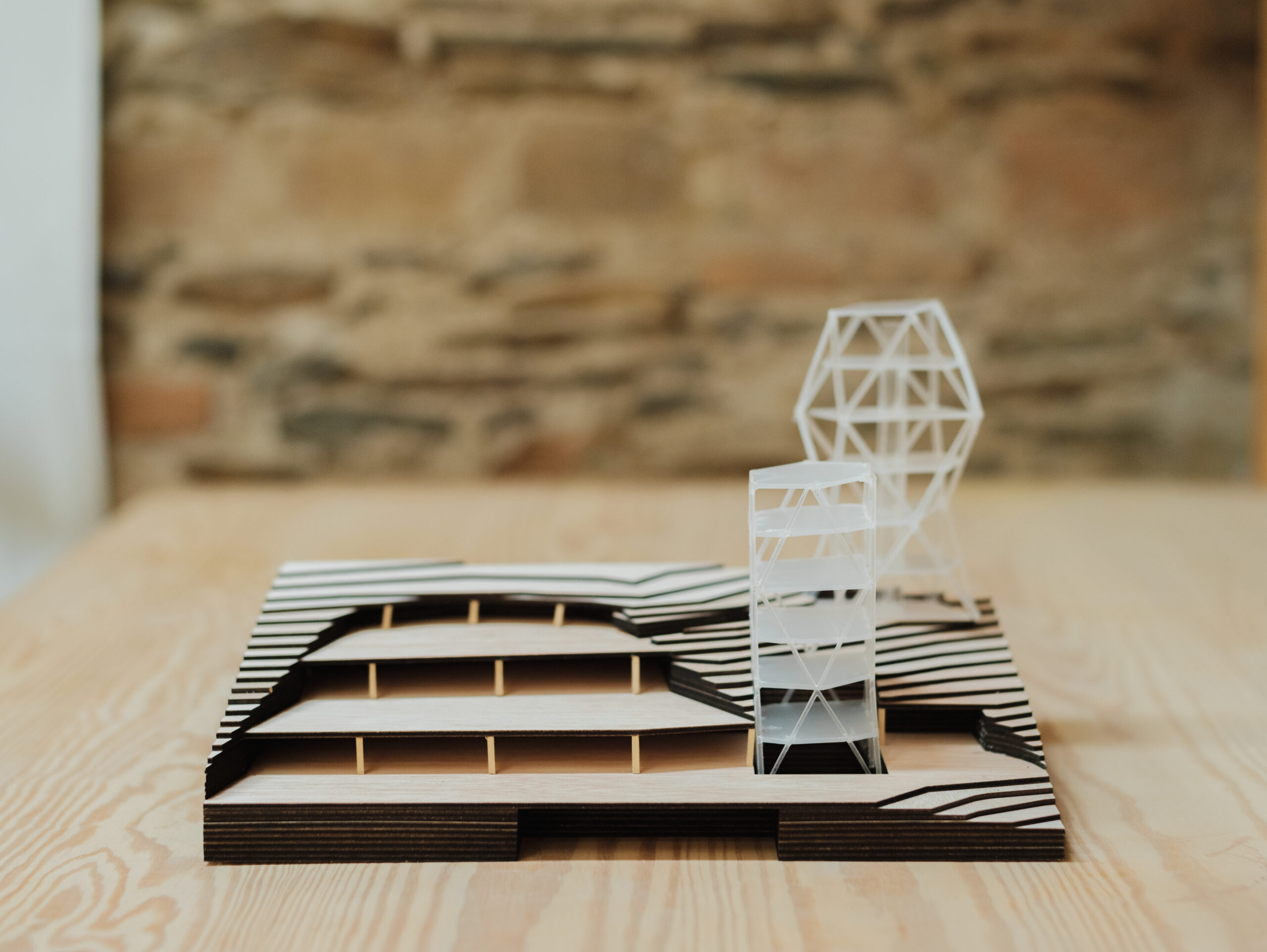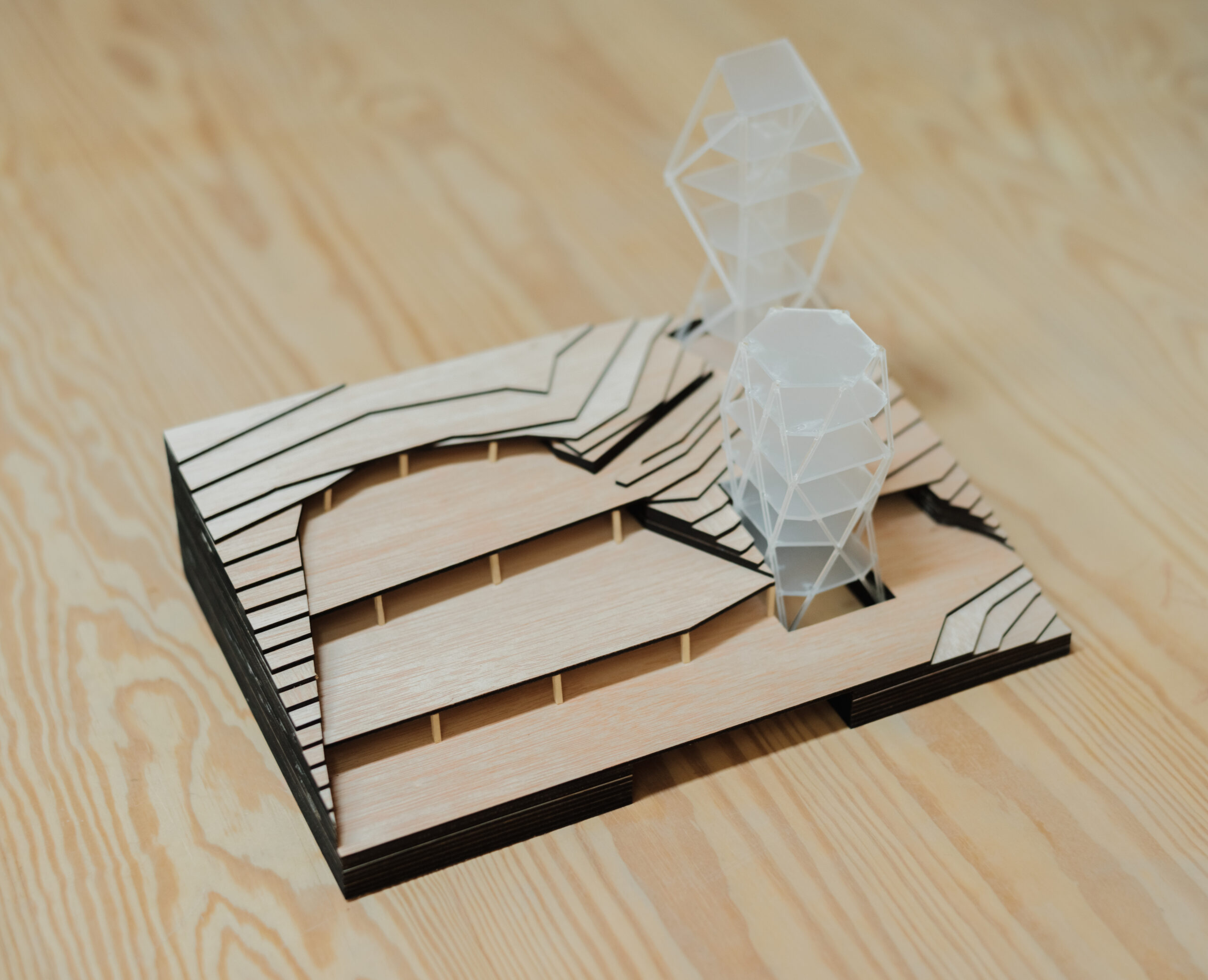BIOBASE(D) is a forest management and research center in the Pyrenees, dedicated to preventing forest fires through sustainable forestry and education. The building’s design—especially its structure—responds to the local climate, highlights the potential of timber as a construction material, and offers visitors and staff a unique experience in this remarkable forest basecamp.
CONCEPT
Location
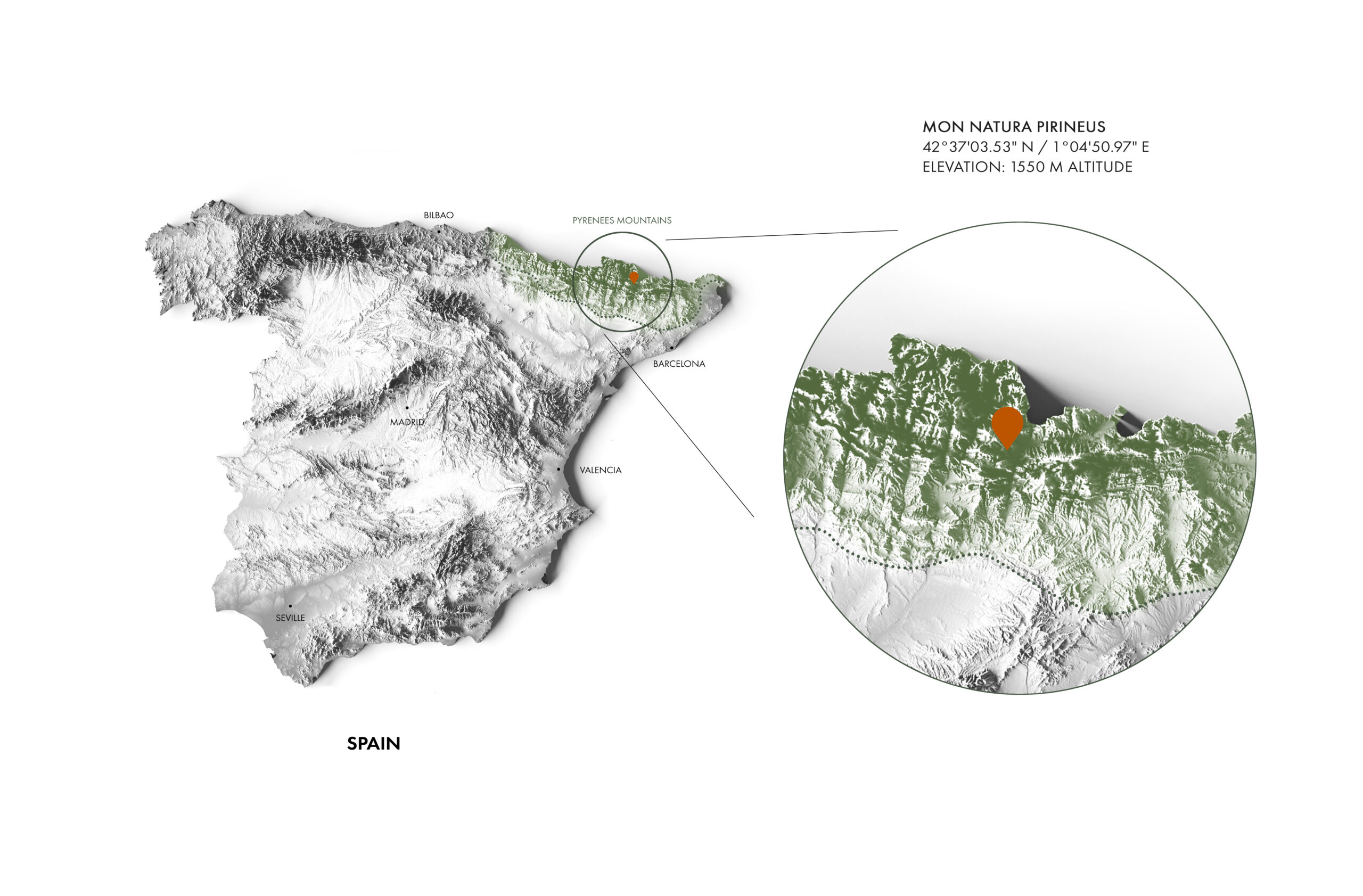
The building is situated in the rural Pyrenees of northern Spain, at an altitude of 1,550 meters.
Inspiration
The site’s high altitude keeps temperatures below comfort levels year-round, making heat absorption and retention a key focus of the building’s climate design. The case studies informing our approach incorporate a second skin to create a greenhouse effect, improving comfort both inside and around the building. For the structural design, we drew inspiration from case studies that highlight the versatility of timber, exploring different construction techniques that could be applied throughout our building.
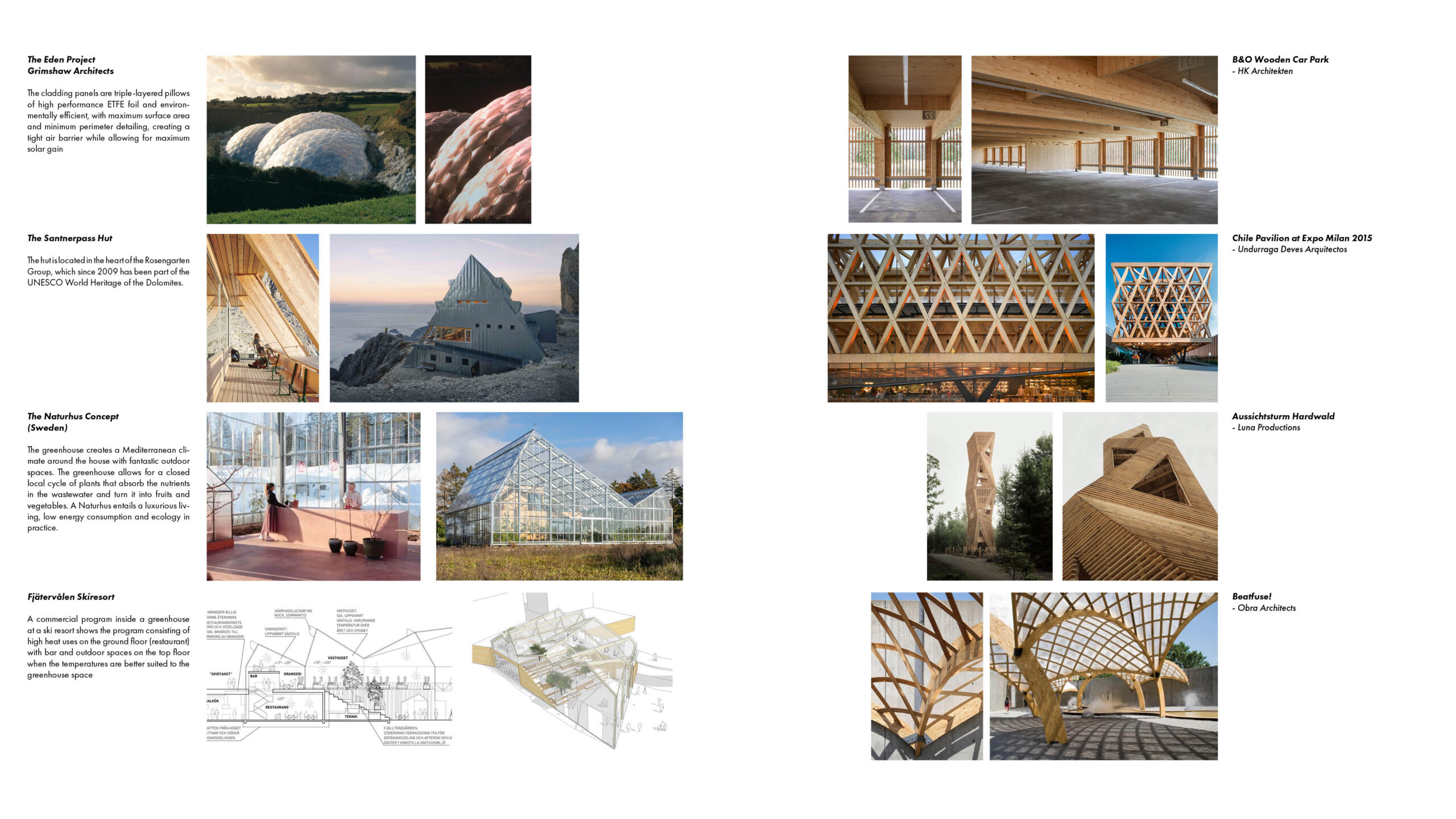
Manifesto
This building is more than just a structure—it is a reflection of the work happening inside. The structure is shaped by its purpose, bringing together research, education, and sustainable forestry in one place. Built from local, renewable materials and designed for efficiency, it minimizes environmental impact.
But its impact goes beyond its physical form. BIOBASE(D) isn’t just a sustainable building—it is a catalyst for change. It demonstrates the possibilities of timber, the intelligence of climate-responsive design, and the importance of responsible forest management. It doesn’t just exist in the landscape; it interacts with it, protecting, restoring, and adapting.
Whether you come here to work, learn, or visit, this place is meant to inspire. It’s a basecamp for new ideas, a hub for innovation, and proof that architecture can do more than just provide shelter—it can shape the way we think about the future.
Form
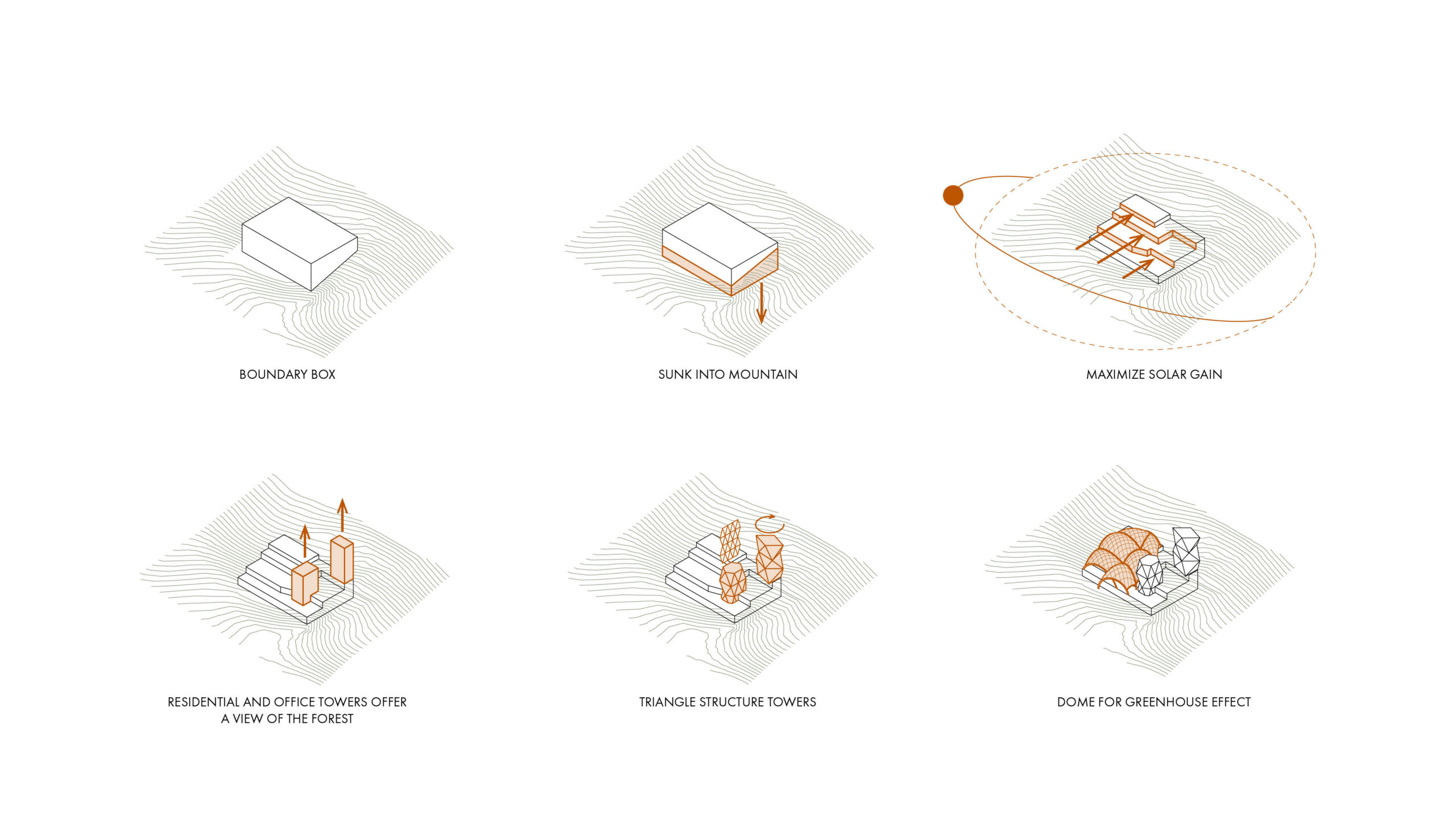
Access & Program
The building integrates four key functions—industry, offices, a visitor’s center, and residential units for workers—each strategically distributed across different floors. This vertical organization optimizes circulation while balancing accessibility and privacy. Public areas, such as the visitor’s center, are easily accessible, while private spaces, like residences, are placed higher or more secluded for tranquility.
To further enhance functionality, the building features two distinct entry points: a public entrance for visitors and a private access for employees, ensuring smooth and efficient movement throughout the space.
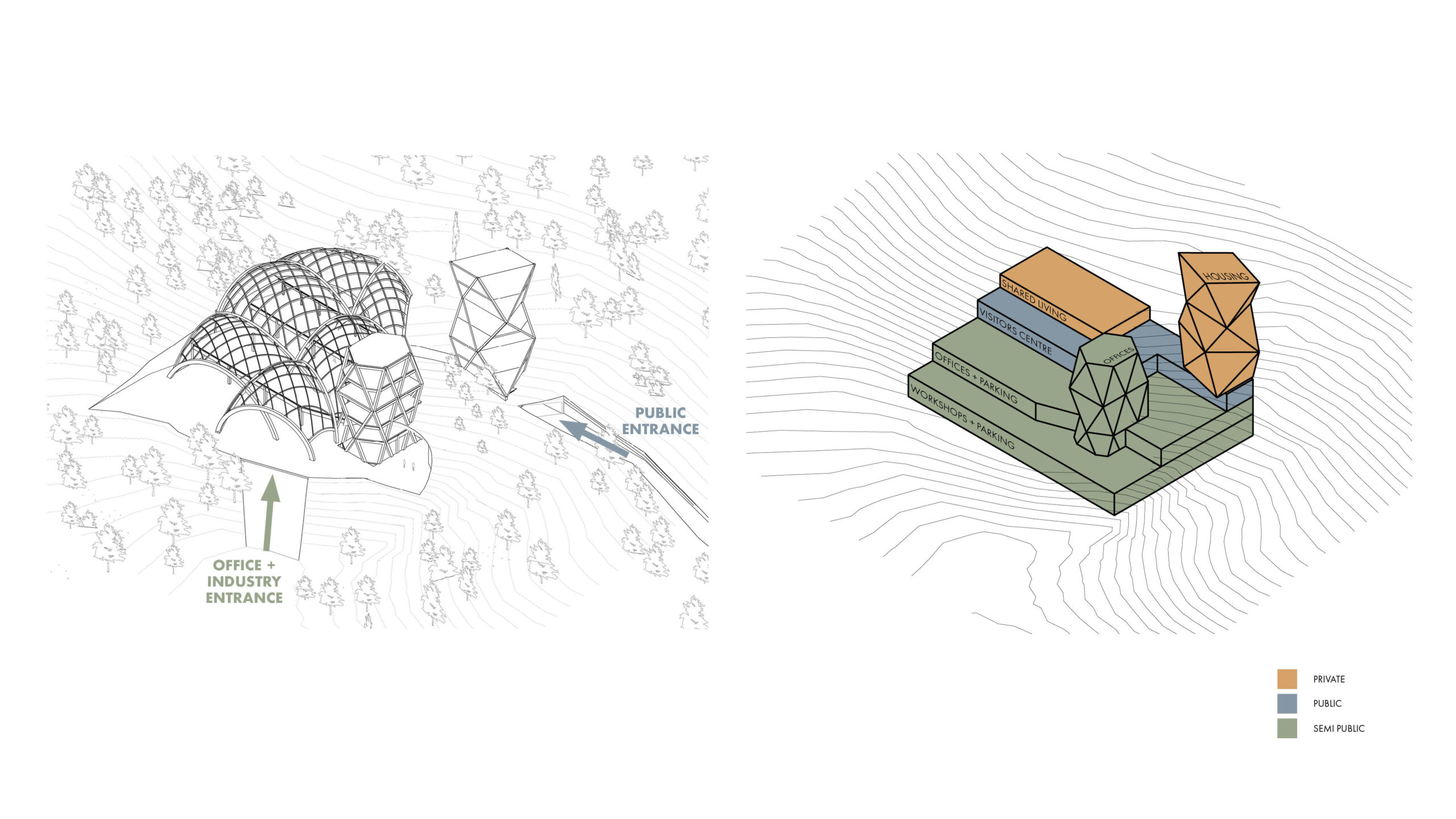
The visitor’s entrance is designed as an immersive experience, guiding guests into the heart of the building. It descends into the mountain through a cave-like tunnel, creating a sense of discovery and anticipation. As visitors emerge, the dome and towers come into view, harmonizing with the surrounding landscape.
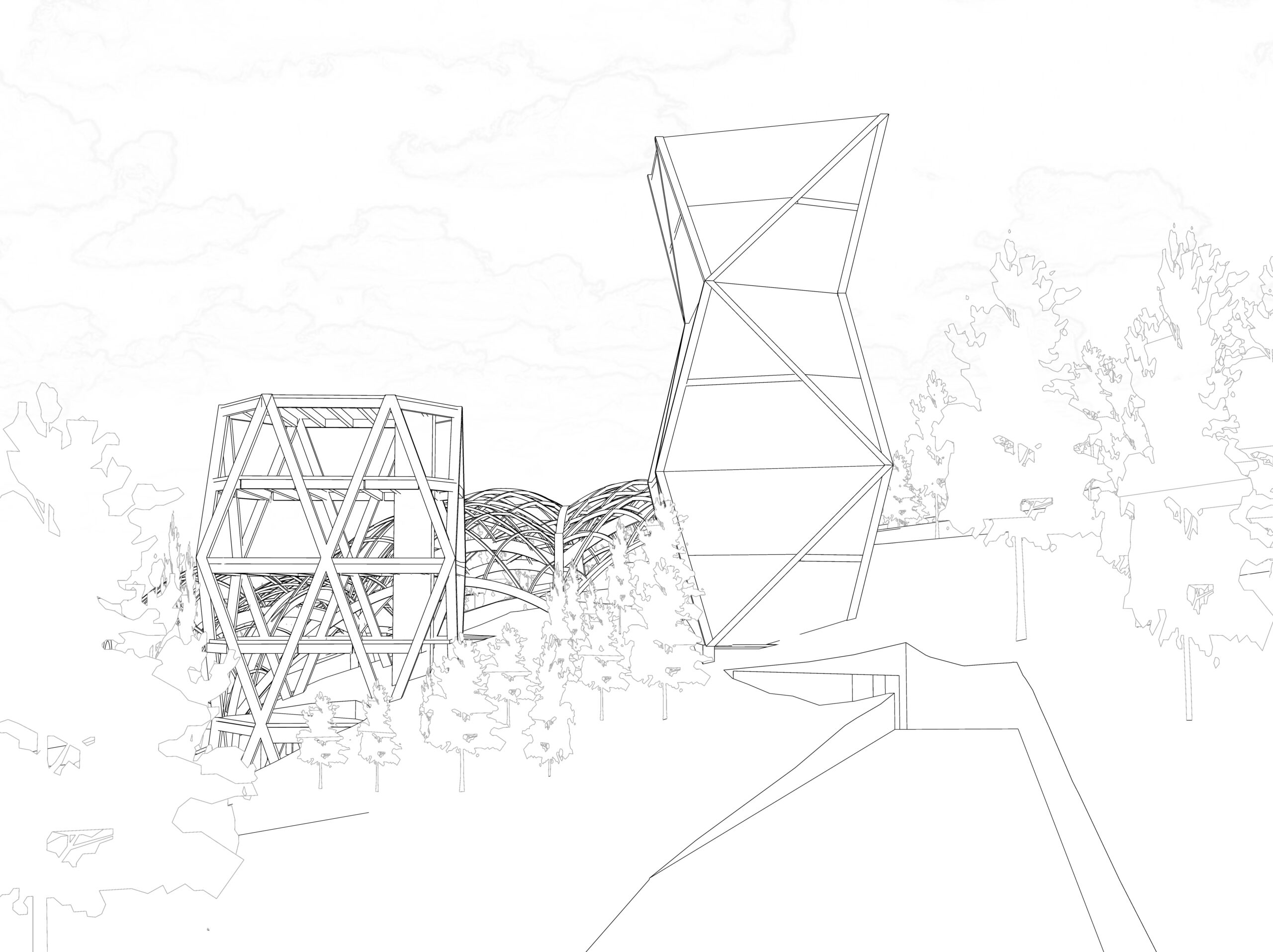
STRUCTURE
Materials
Although the building is composed of three distinct parts—the mountain base, towers, and dome—we prioritized creating a sense of unity, ensuring it feels like a single structure rather than separate elements. This cohesion is achieved through a consistent structural language that varies in expression while showcasing the versatility of timber as a construction material.
The mountain base, embedded into the terrain, requires concrete retaining walls for stability. To maintain a coherent structural approach, we employ a concrete-timber hybrid system throughout the building. The floors are constructed using concrete-CLT slabs, enhancing structural efficiency over longer spans, improving acoustic performance, and adding thermal mass for better climate regulation.
In the mountain base, these slabs rest on a glulam beam and column grid. In the towers, they are supported by a central core and a triangular structural façade made of glulam beams. The dome, in contrast, features an ETFE membrane supported by a glulam timber frame, creating a lightweight yet resilient enclosure.
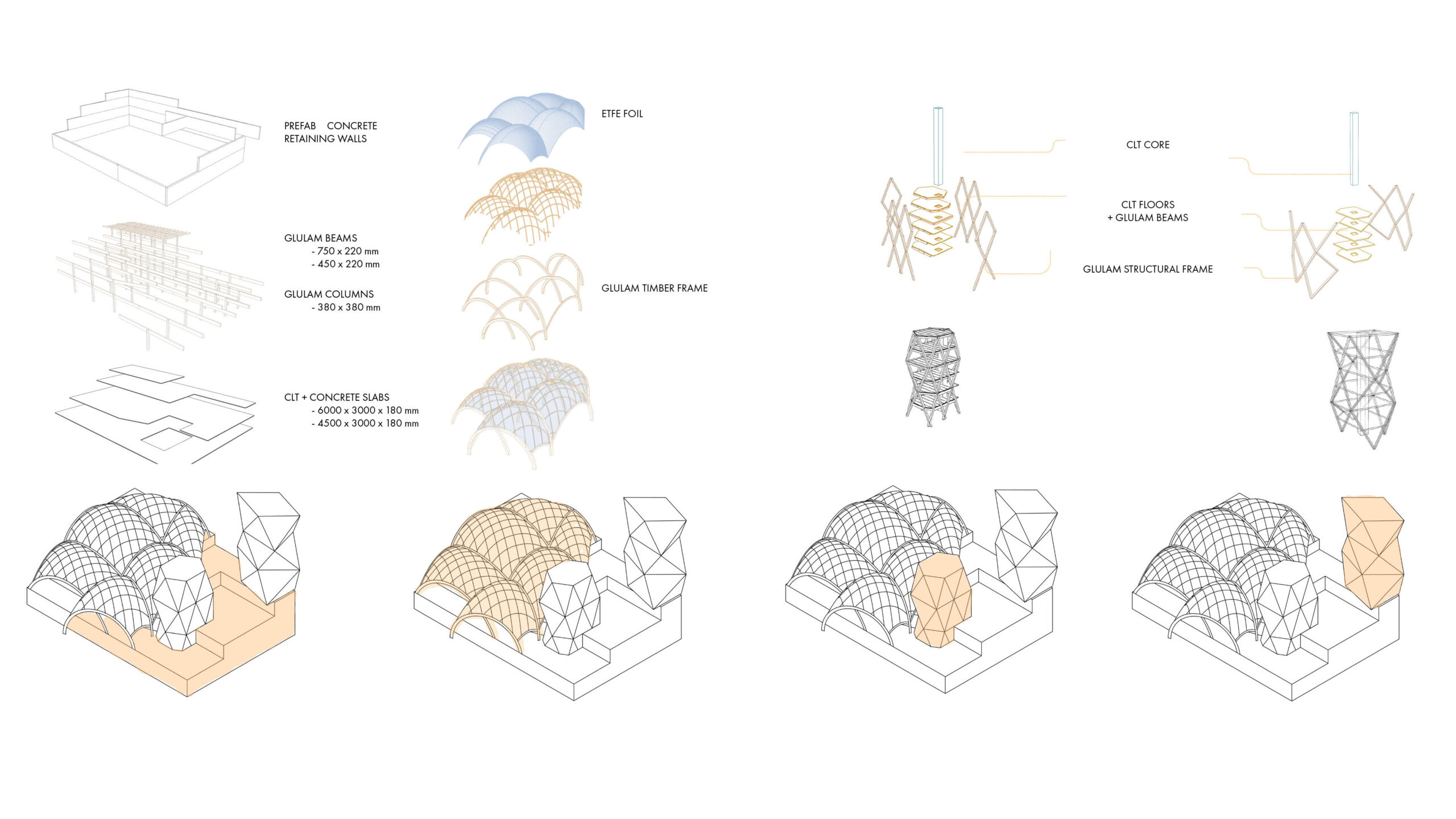
Floorplans
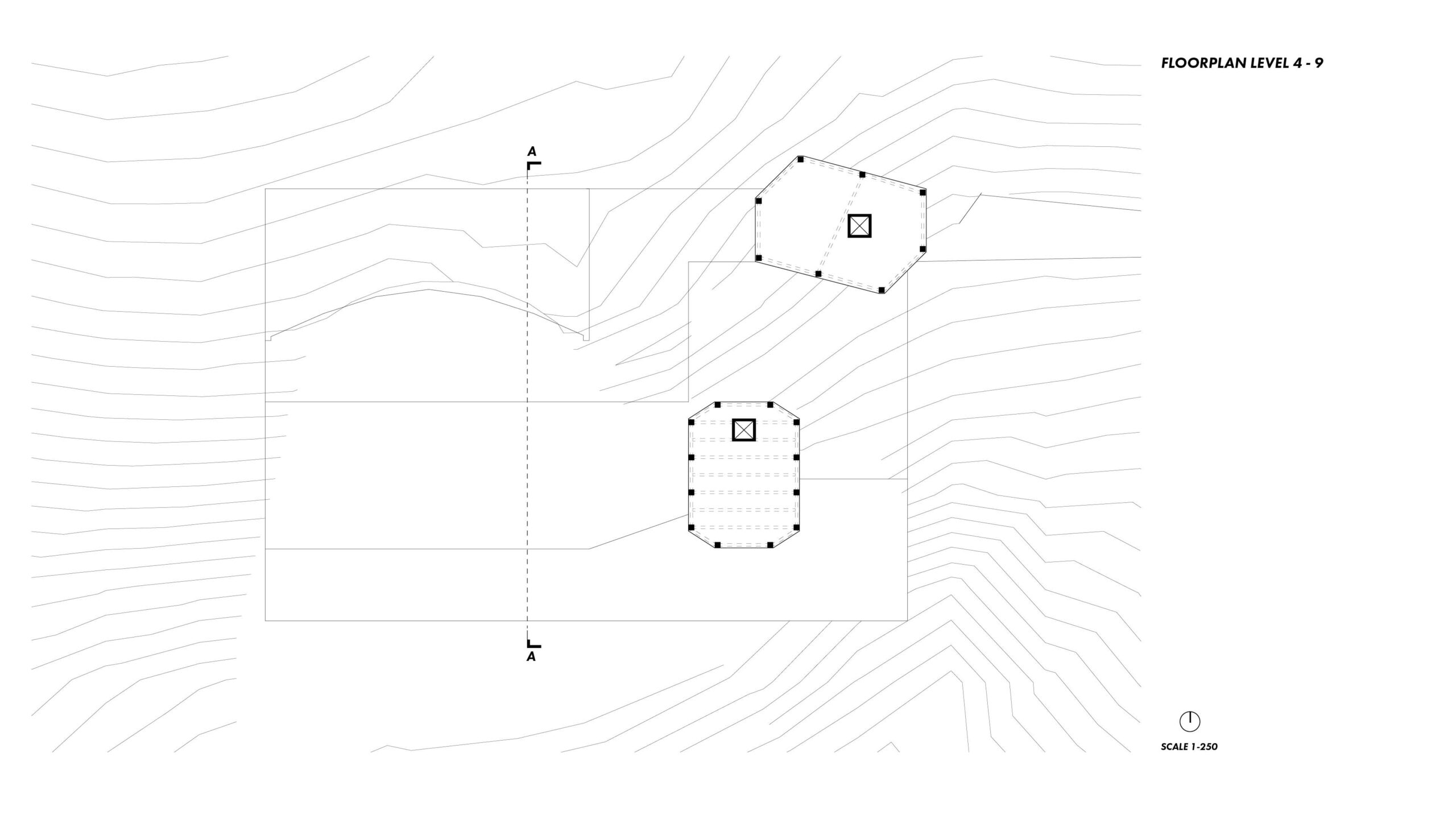
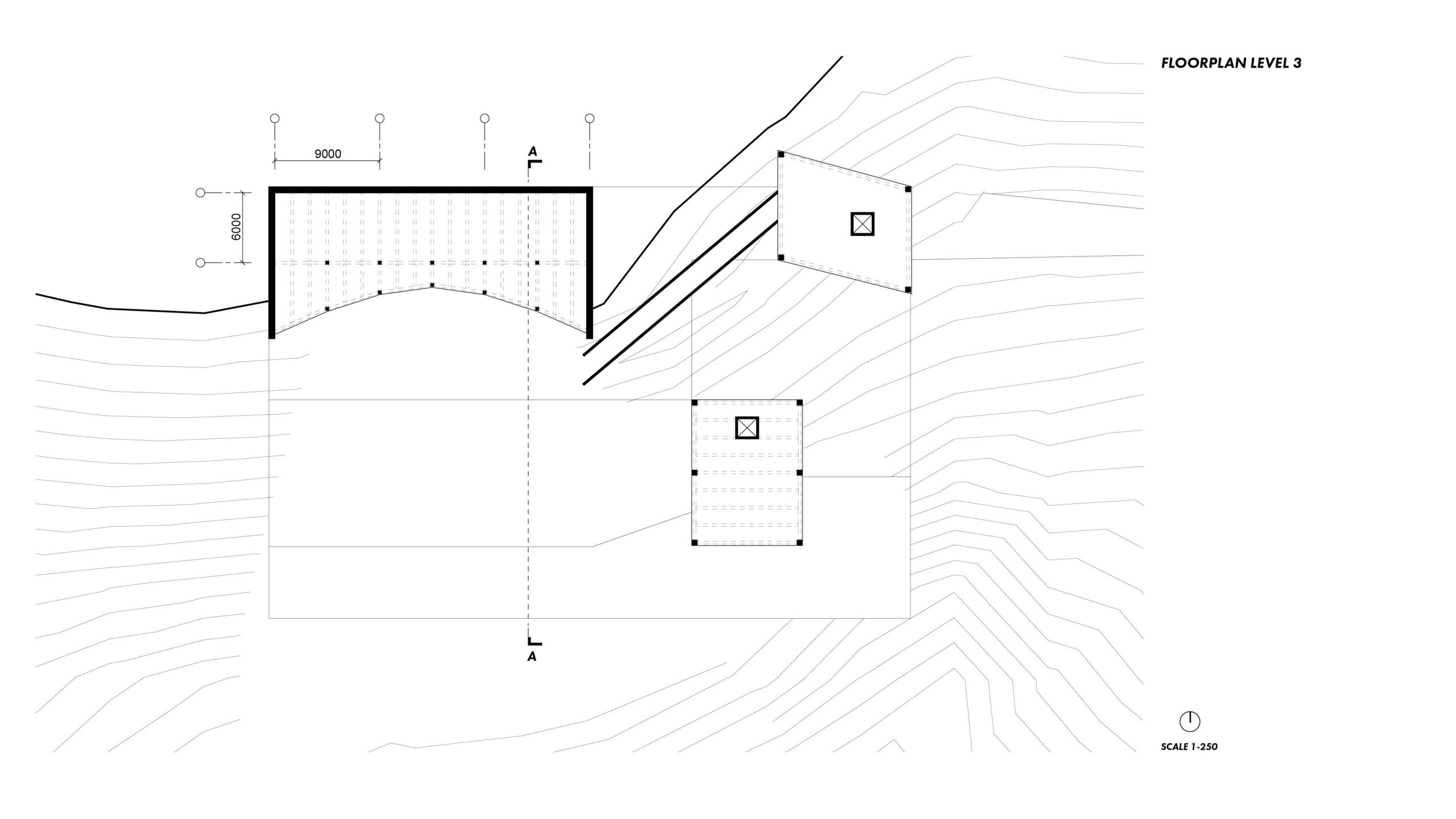
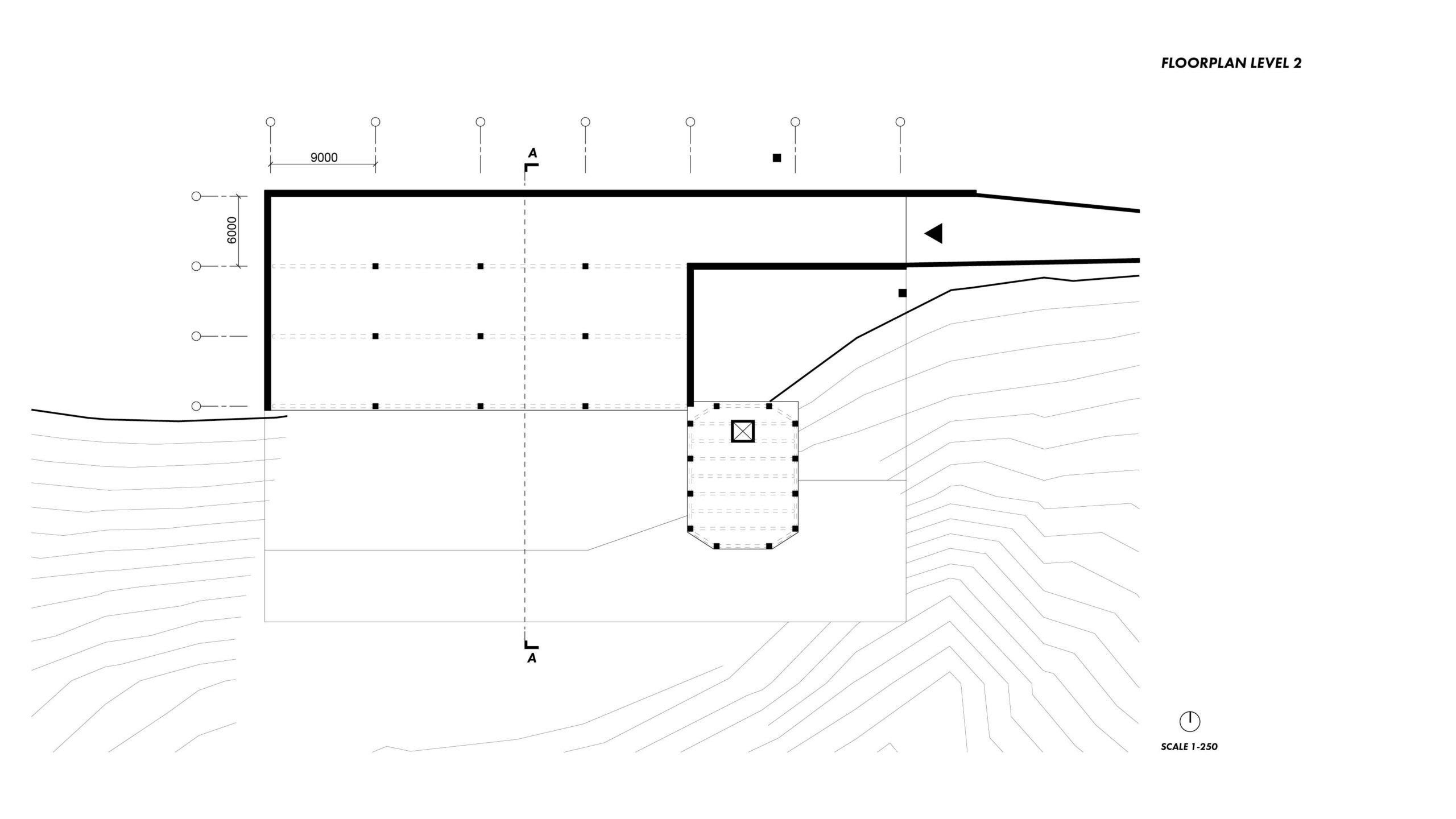
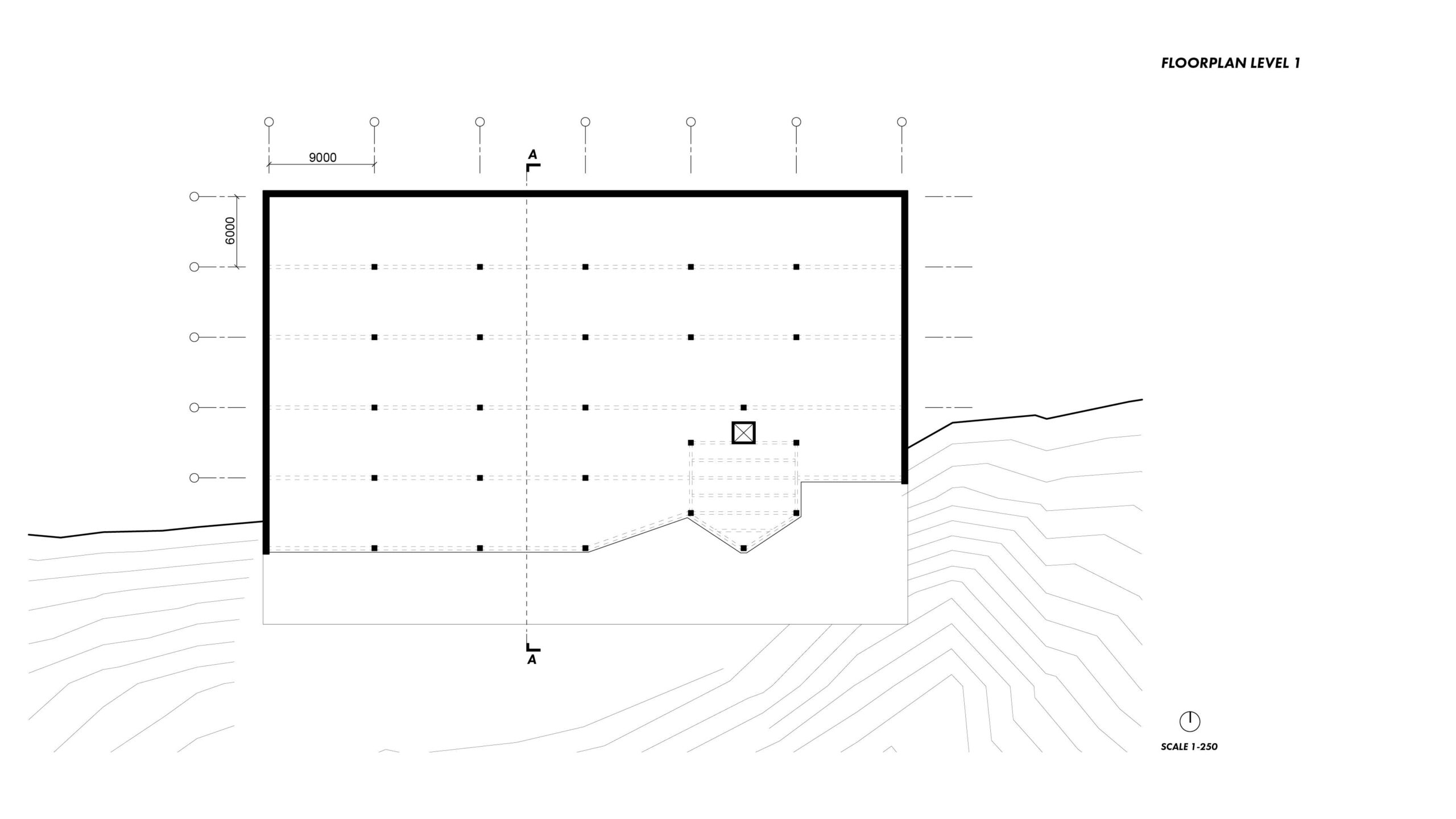
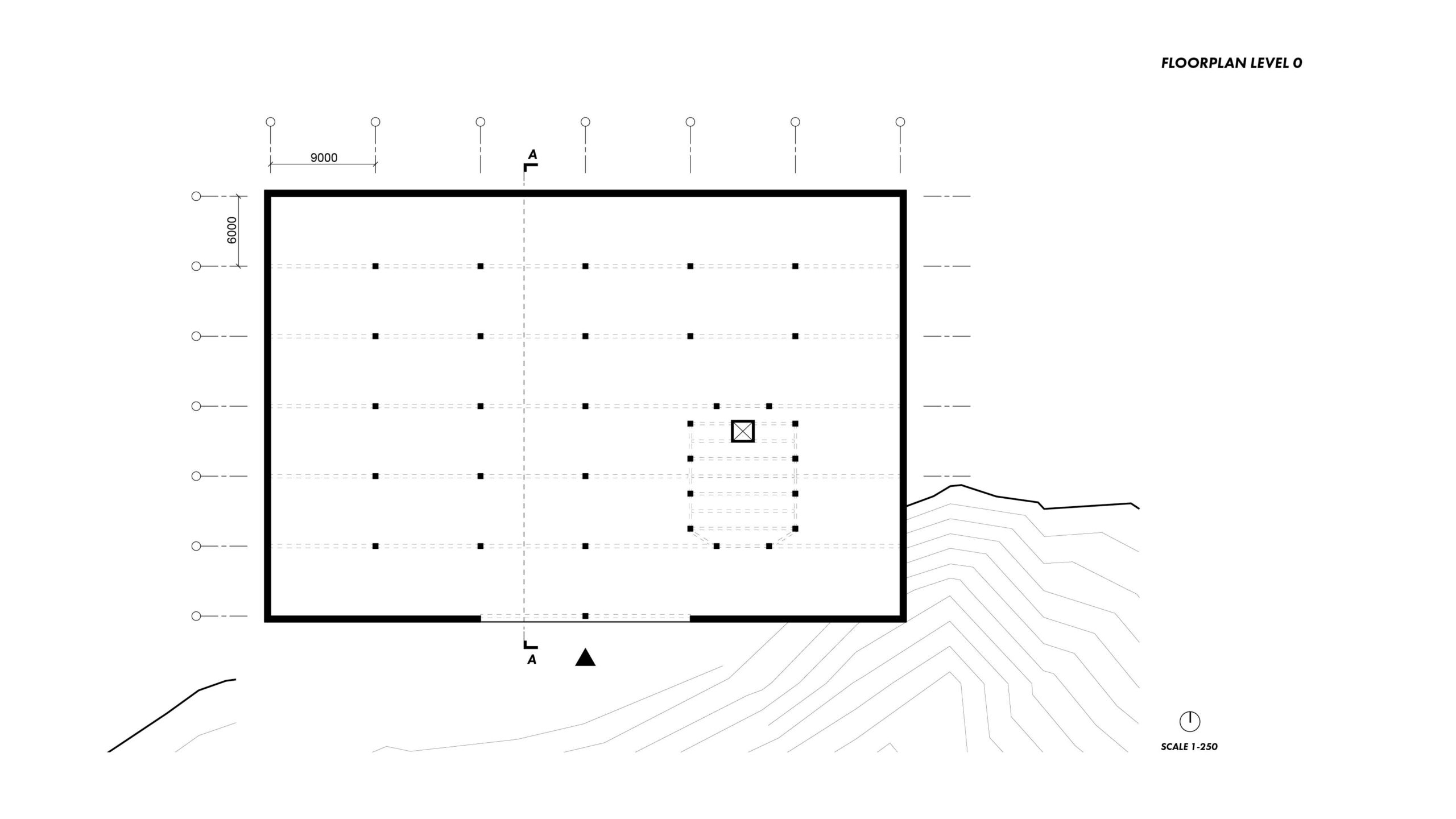
Section
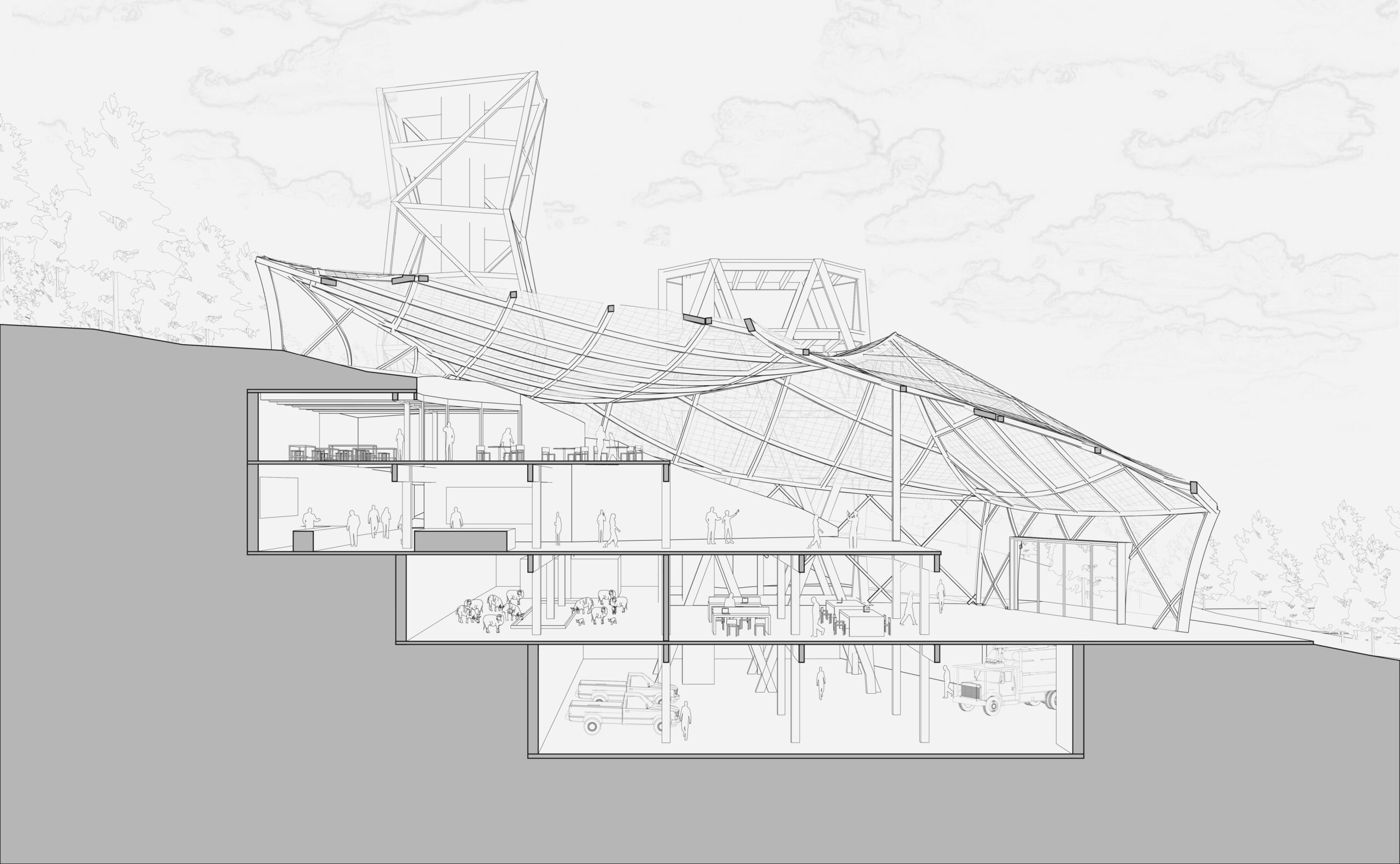
Details
The first detail illustrates the connection between the residential tower and the mountain base structure. The tower’s columns are supported by a concrete transfer box, which distributes the loads to the columns of the mountain base below. Both the concrete-CLT slabs and the glulam beams are joined using concealed metal connections, maintaining a clean and seamless appearance.
To ensure efficient load transfer across floors, the columns are linked by metal rods, directing forces from one level to the next. This system prevents the concrete-CLT slabs from bearing unnecessary compression, preserving their structural integrity.
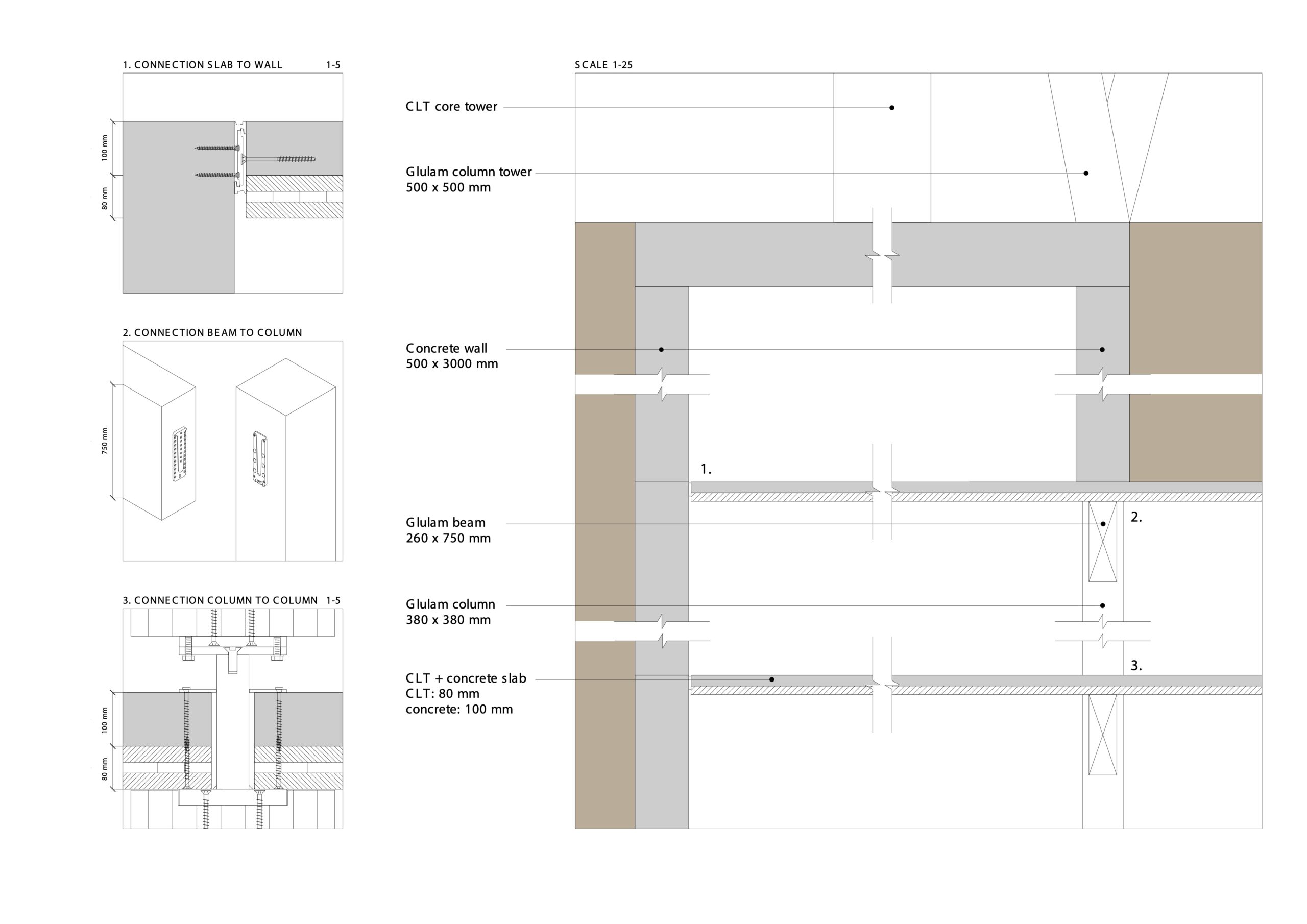
The second detail illustrates the junction of multiple columns in the residential tower. The columns are connected to each other and to the concrete-CLT slabs using concealed metal fasteners.
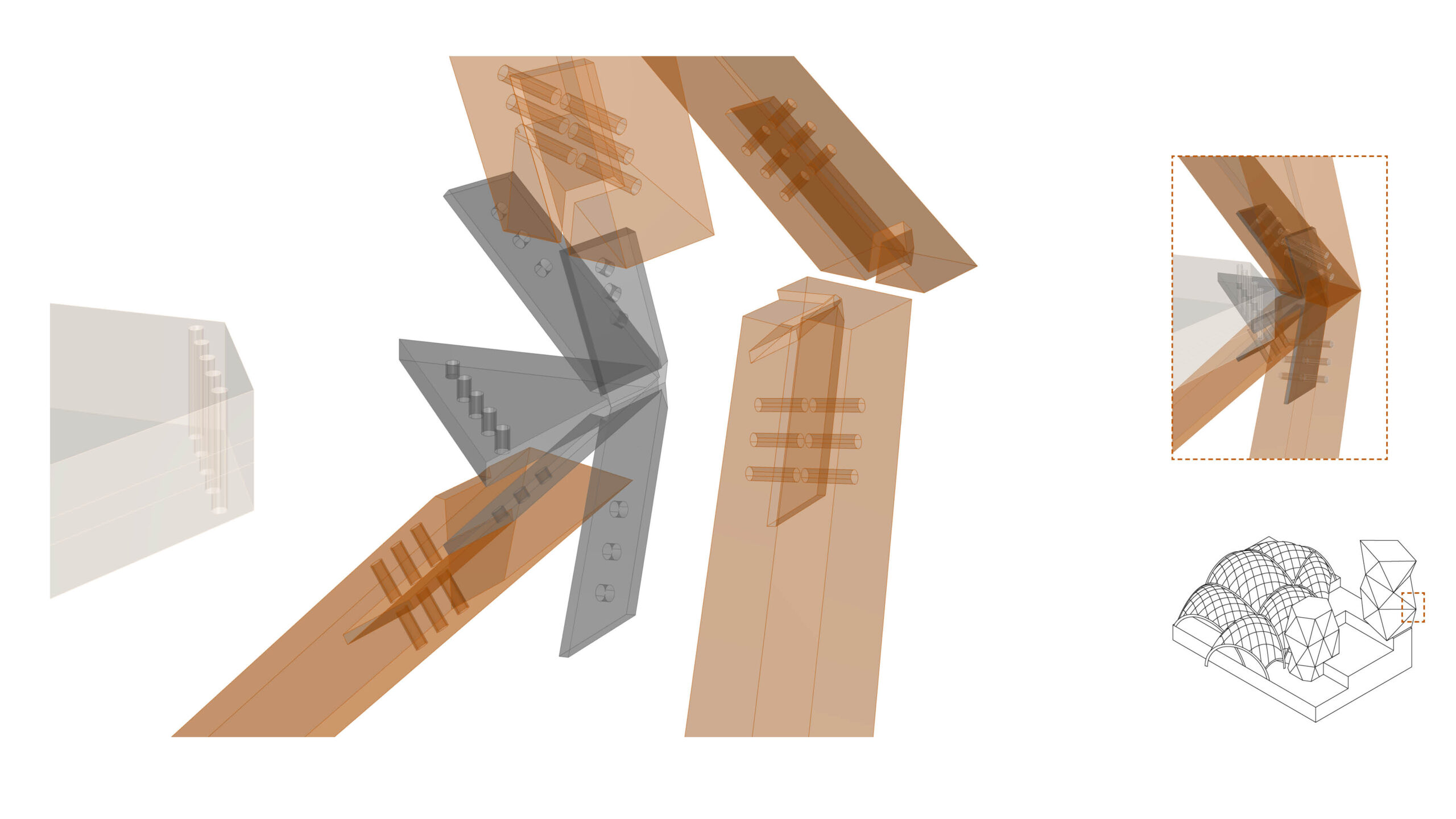
The third detail illustrates the connection within the glulam frame of the dome. Metal fasteners are used to connected the secondary glulam pieces to eachother and to the main frame.
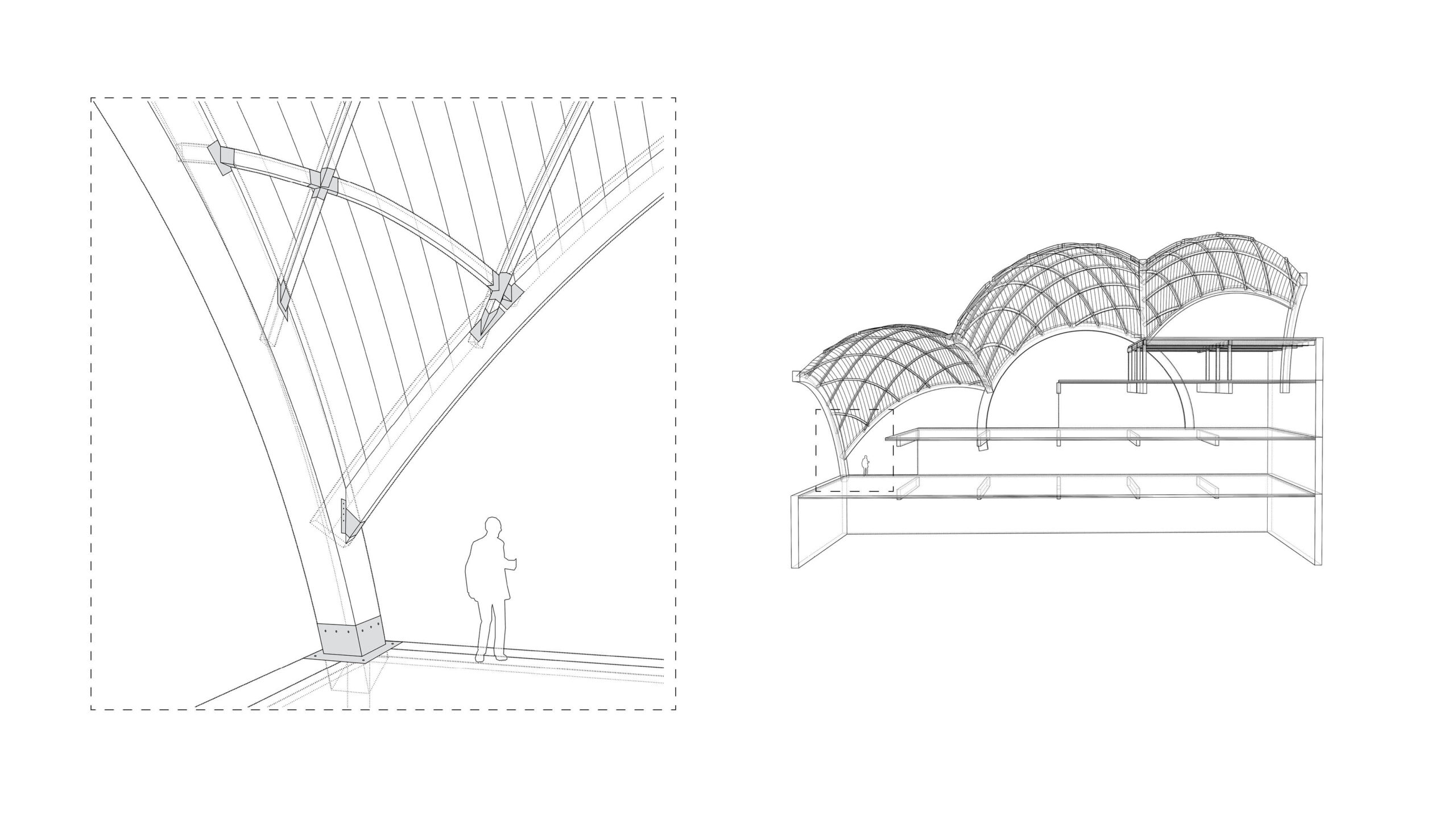
PHYSICAL MODEL
